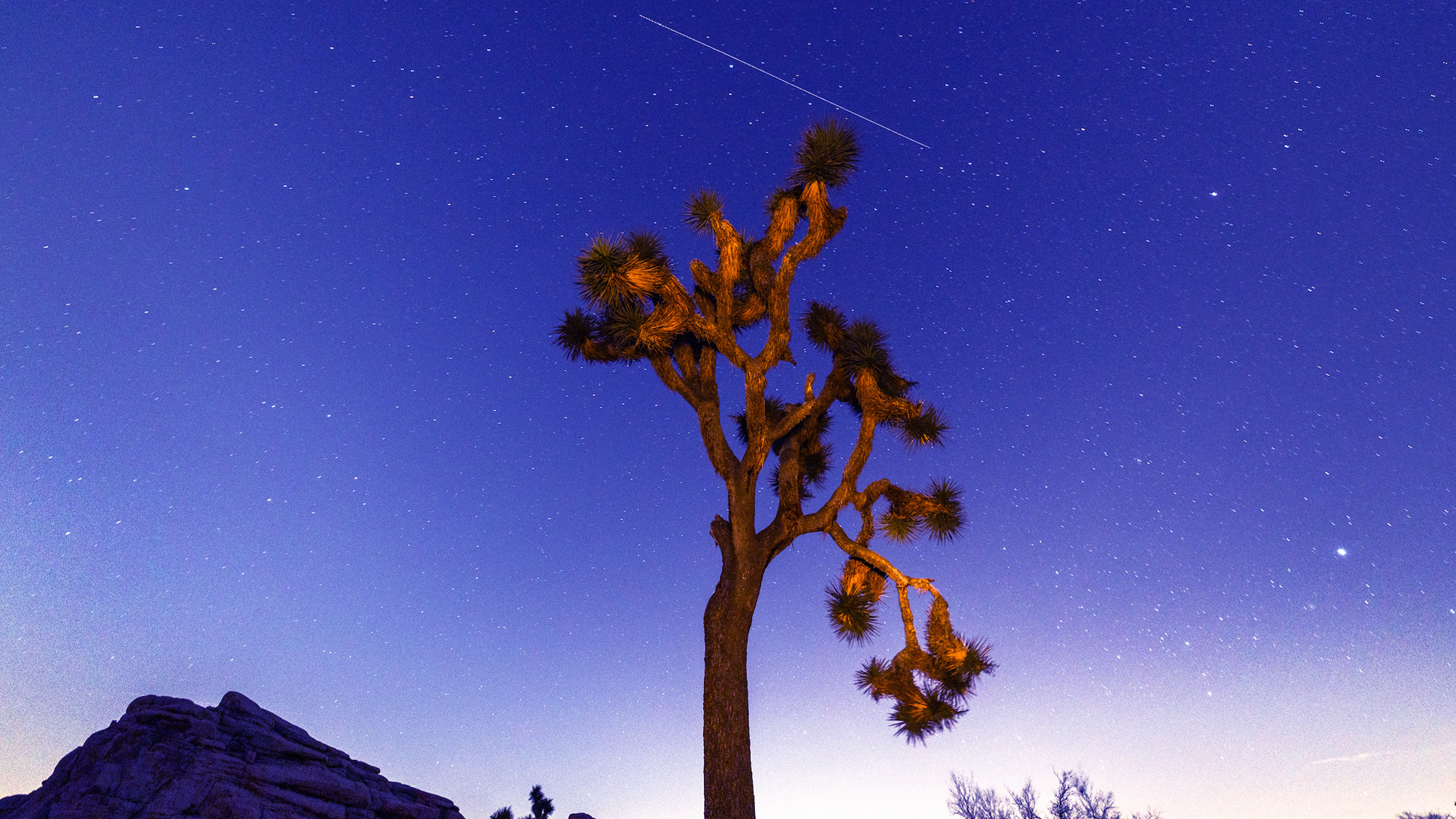
April skygazing: A pink micromoon, the Lyrid meteor shower, and more
www.popsci.com
The Lyrid Meteor Shower is visible with competition from the bright light of the full Pink Moon in Joshua Tree National Park on April 25, 2024. The Lyrids are produced by dust particles left by comet C/1861 G1 Thatcher, and there are roughly 20 meteors per hour during its peak. CREDIT: Allen J. Schaben / Los Angeles Times via Getty ImagesApril 1 and 2Jupiter and the Moon Visible near TaurusApril 4Messier 94 Visible With a TelescopeApril 12Full Pink MicromoonApril 21 through 22Lyrid Meteor Shower Predicted PeakAs spring approaches in the Northern Hemisphere, the nights are getting shorter. This might be good news for early risers, but a bit of bad news for stargazers. Still, April is not without its celestial highlights: it brings the annual Lyrid meteor shower. This first full month of spring also presents a micromoon, a chance to see an iconic (if distant) galaxy, and a very frisky Jupiter.April 1 and 2 Jupiter and the Moon Visit Taurus and the PleiadesThe solar systems large adult son will be particularly bright in early April, blazing in the western sky in close proximity to the waxing crescent moon. Both will be visible in the same region as the constellation Taurus, around 30 from the horizon. On April 1, the moon will hover above the Pleiades, also known as the Seven Sisters in Greek mythology and, in Japan, as Subaru. If youve ever wondered about the provenance of the car company Subarus logo, now you know. Get the Popular Science newsletter Breakthroughs, discoveries, and DIY tips sent every weekday. By signing up you agree to our Terms of Service and Privacy Policy.April 4 Messier 94 Visible with a TelescopeThe start of April provides an opportunity to take a look at a galaxy far, far away: Messier 94. It is located about 17 million light years from us in the constellation Canes Venatici. This spiral galaxy is known informally as the Crocs Eye or Cats Eye, for reasons that will become clear if you get out your telescope or a set of good binoculars while its at its highest point in the sky this year.In North America, the galaxy will become visible 41 above the north-eastern horizon at around 8:30 p.m. EDT, and continue rising until its almost directly above around midnight. It will then sink towards the northwestern horizon as the day approaches.The Hubble Space Telescope has taken some spectacular images of Messier 94 over the years. While youre not going to see anything like this from Earth, its still fascinating to be able to see the same object with your own eyes!April 12Full Pink MicromoonTheres nothing quite as dramatic as last months blood moon this time around, but Nick Drake fans can rejoice, because April is the month of the Pink Moon. As per the Farmers Almanac, this months full moon takes its name from the vibrant pink flowers of Phlox subulata, or moss pink, which comes into full bloom this month.[ Related: How the blood moon gets its ghoulish hue. ]Native American culture provides several additional names for Aprils full moon.The Oneida call it Wasakayutese (Its Thundering Moon) and in the language of the Catawba nation its YitAruwakrere Nuti (Bear a Child Moon). The Anishinaabemowin language of the Ojibwe provides multiple monikers, including Bobookwedaagime-giizis (Snowshoe Breaking Moon) and Maango-giizis (Loon Moon).And thats not all! This months full moon is also notable for being a micromoon. The moons elliptical orbit means that its distance from the Earth varies throughout the year.This month finds the moon at its apogee, which means that its as far away from us as it gets. The opposite scenario, when the moon is at its perigee, is called a supermoon.The next supermoon is not until November, so stay patient.April 21 through 22 Lyrids Meteor Shower Predicted PeakIts meteor shower time! The 2025 installment of the annual Lyrid meteor shower is predicted to begin on April 21, peaking in the late afternoon of April 22. This isnt far out from the full moon, which tends to make seeing other celestial objects difficult, so the best time to look for meteors will be when the moons not around. The Adler Planetarium and the Farmers Almanac both suggest the early hours of April 22. The moon rises at 3:32 a.m. CDT that morning, so youll either have to stay up late or get up unconscionably early to catch the show.As always, youll get the best experience if you get away from any sources of light pollutionand you check out our stargazing tips before you head off into the darkness.Until next month!
0 Comments
·0 Shares
·77 Views


